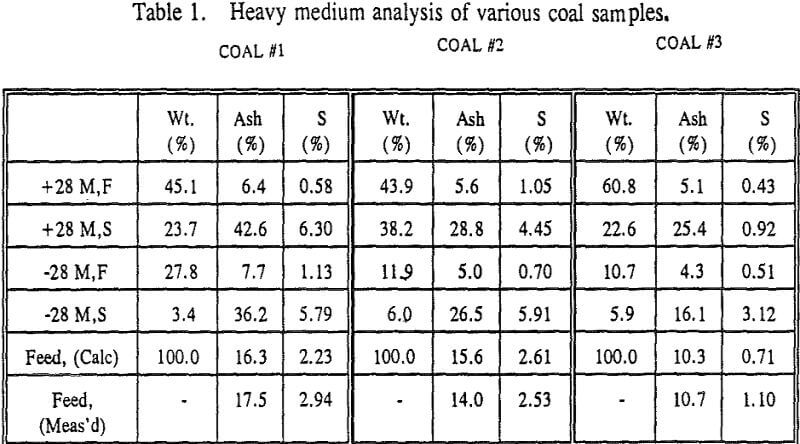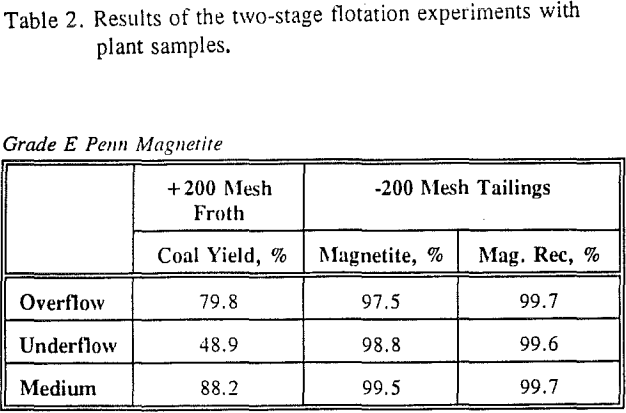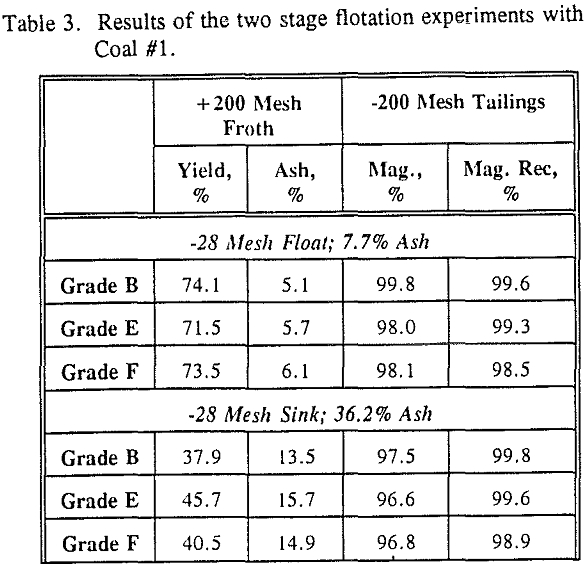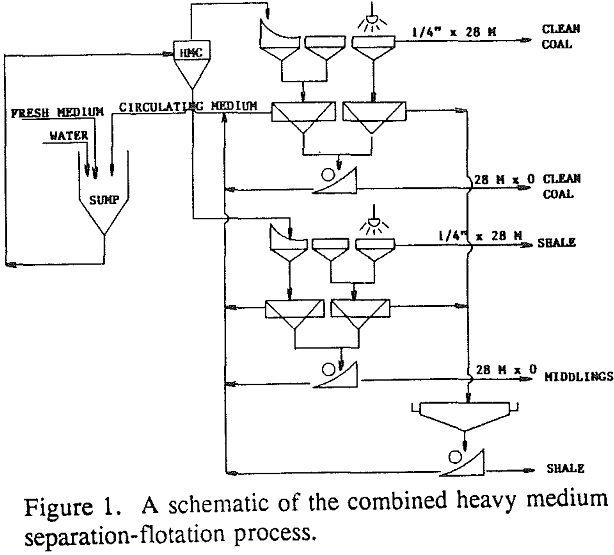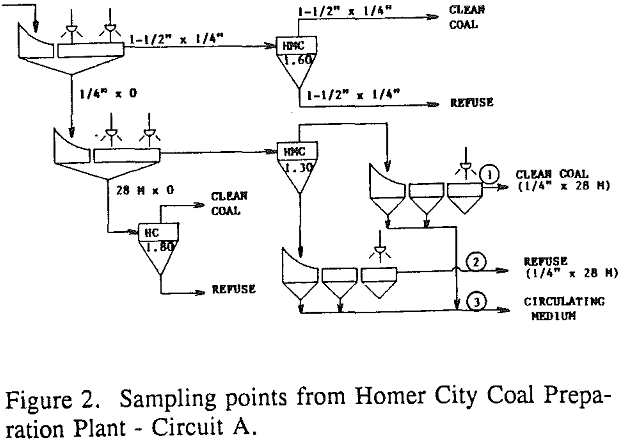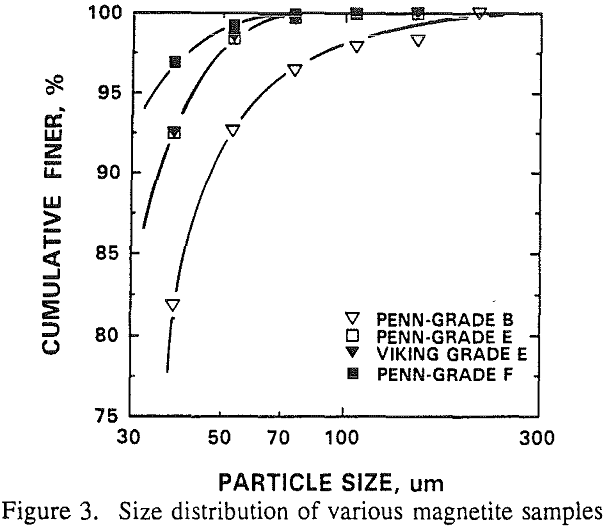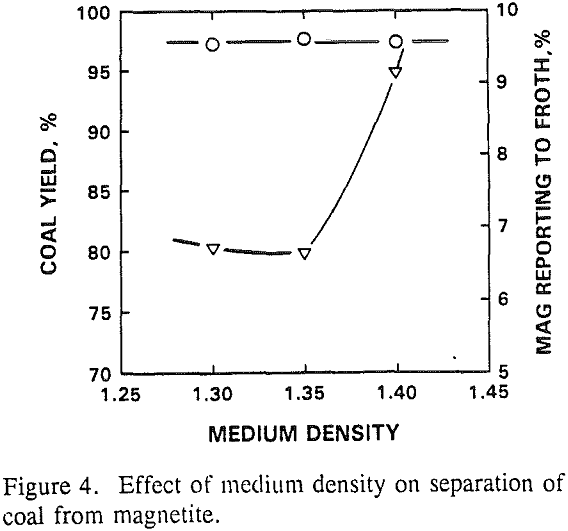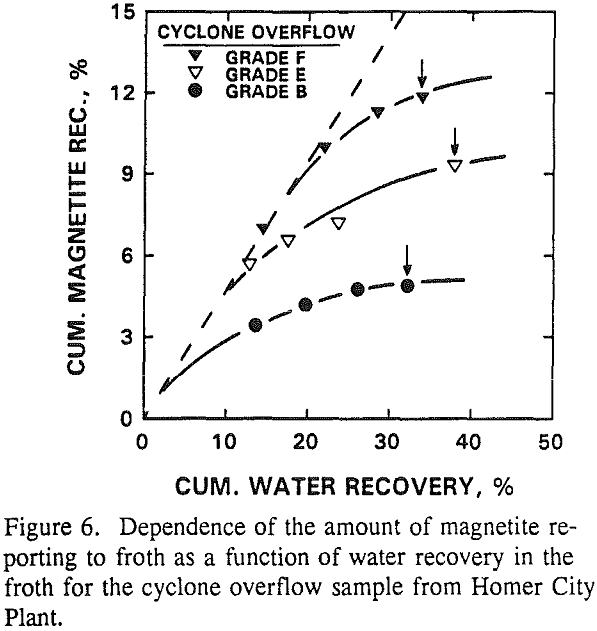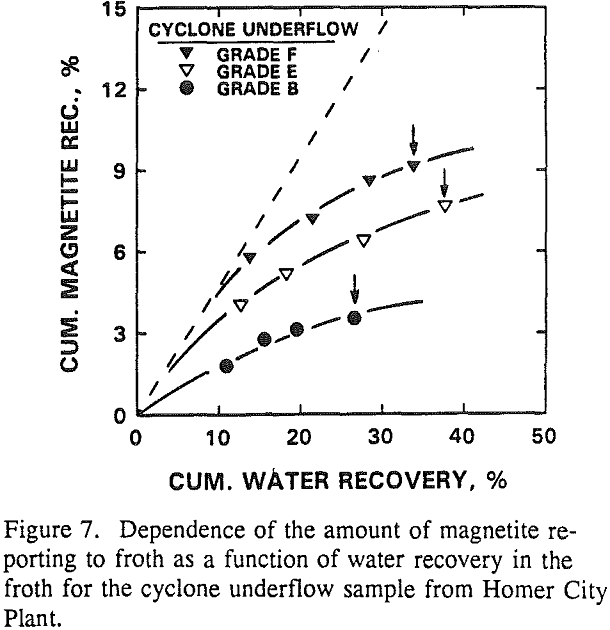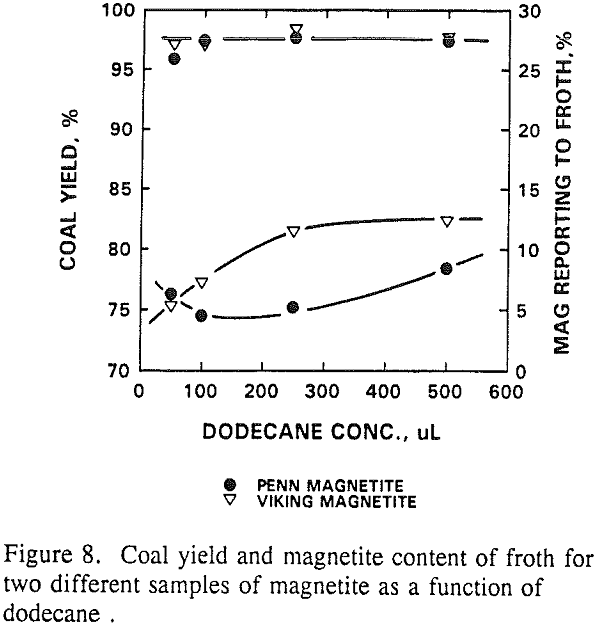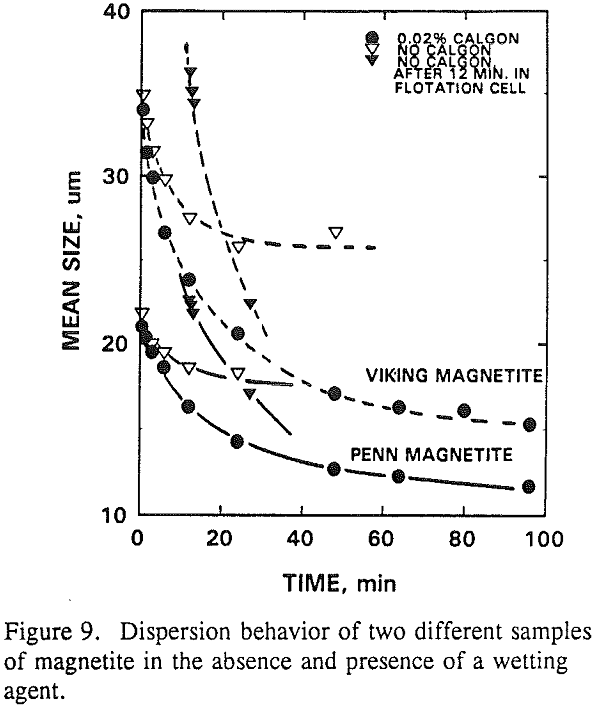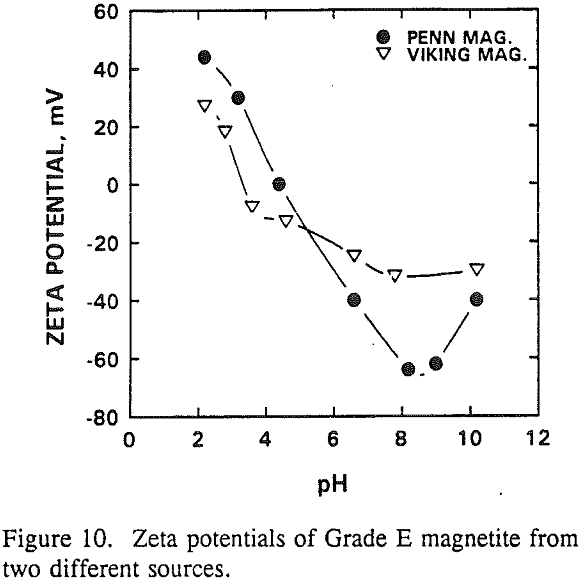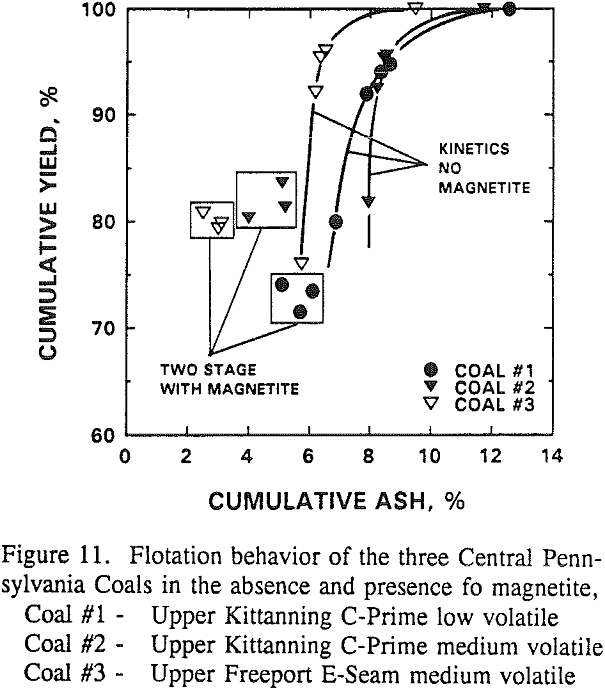Heavy medium cyclones make use of a medium which is a homogenous mixture of water and dispersed magnetite. Density of the medium is regulated by adjusting the amount of magnetite in the mixture. Coal is mixed with the medium in a sump and fed to the HMC where the heavier ash material is separated from lighter coal due to density differences. Both overflow and underflow streams from the cyclone contain magnetite medium besides coal and ash. Fine magnetite is separated from coarser coal in a series of drain and rinse screens. Often, the magnetite medium is contaminated by fine coal particles which can not be separated by the drain screens and a portion of the medium is sent to magnetic separators for removing the non-magnetic material. Flotation, on the other hand, uses a totally different mechanism to separate coal from ash. Hydrophobic coal particles attach to the air bubbles introduced in the flotation cell and rise to the top of the cell whereas the hydrophilic ash particles stay in the bulk solution. The froth layer containing the coal is removed from the top, leaving the ash material in the cell.
Materials
In-plant samples were obtained from the Homer City Coal Preparation Plant (HCCP) of Pennelecs’s Homer City Mine Mouth Preparation and Power Plant Complex. This plant treats primarily a combination of Upper and Lower Freeport deep mined coals using both coarse and fine heavy medium cyclone circuits. The three samples used in the study, which are called as “cyclone overflow”, “cyclone underflow” and “plant circulating medium” in this article, were obtained respectively from the clean coal and refuse streams, and from the underflow of the refuse drain screens of the primary heavy medium cyclone circuit which was operating at 1.30 specific gravity.
Since it was expected that the size distribution of the medium would be an important factor in the flotation of coal from magnetite, three grades of magnetite were obtained. These were Grades B, E and F containing 81.8%, 92.5 and 96.9% -400 mesh material, respectively.
Results and Discussions
Effect of the Medium Density: Since it was the aim of this investigation to determine the separability of magnetite from coal, synthetic mixtures of magnetite and coal were used to simulate a heavy medium cyclone operating at low separation densities.
Effect of Magnetite Grade: Flotation kinetics studies were performed using the cyclone overflow and underflow samples obtained from the HCCP primary flotation circuit. These experiments were conducted both in the presence and in the absence of magnetite. Three different grades of magnetite, namely grades B, E, and F, were used in the experiments and the density of the flotation pulp in the absence of coal was 1.35.
During flotation increasing amounts of magnetite reports to the clean coal product as more and more froth is removed. This is not surprising since the flotation pulp is a mixture of water and magnetite and more froth removal will bring more water and more magnetite to the clean coal product. The relationship between the water recovery and the magnetite losses to the froth can be seen from Figures 6 and 7 for the cyclone overflow and the underflow samples, respectively.
Two-Stage Flotation: It was observed in the single-stage flotation kinetics experiments with the plant samples that about 5 to 12% of magnetite reported to the froth depending on the grade of magnetite after 4 minutes. Therefore, cleaning of the froth product was deemed necessary to reduce the magnetite losses and to obtain a reasonable clean coal product. Thus, the froth obtained from the first flotation stage was floated for three more minutes after adding makeup water and 100 µl each of dodecane and MIBC.
Effect Magnetite Source: A series of experiments were conducted with the cyclone overflow sample in the presence of magnetite from different suppliers with the same size distribution in order to see the effect of source of magnetite.
Since the magnetite recovery to froth was much better for the Penn magnetite sample while the coal recovery remained unchanged for both the samples, the magnetite sample from the Penn Magnetite Company was used in all the experiments conducted in this study. Moreover, a dodecane concentration of 100 was chosen since it resulted in the smallest losses of magnetite to froth.
Flotation Kinetics in the Absence of Magnetite: To determine the flotation response of the three coal samples kinetics experiments were carried out with -28 mesh raw coal in the absence of magnetite. The clean coal yields after the first 2 minutes (the third data point on each curve) are 93.6%, 95.3% and 95.4% with corresponding ash contents of 8.4%, 8.5% and 6.3% for the coal 1, Coal 2 and Coal 3, respectively.
Two-Stage Flotation with Magnetite: The same procedure was employed in conducting the two stage flotation experiments as in the case of HCCP samples. It is clearly seen that the yield of coal to the froth from a given feed sample is not affected greatly by magnetite grade. This further confirms the results obtained with the HCCP samples where the yield of the coal product was the same after 3 minutes of flotation for different magnetite grades.
When all the results for – 28 mesh float products were examined for the three grades of magnetite, the average magnetite grade in combined -200 mesh tailings was 98.6% whereas it was 97.1% for the -28 mesh sink fraction. Magnetite recoveries were over 99% in both cases. The magnetite losses were largest for Grade F magnetite which is a very fine material. However, even in the case of this magnetite, the recovery of magnetite was always above 98.5% with a grade of 96% or higher.
Summary and Conclusions
A new process scheme was investigated in which the benefits of heavy medium separation and flotation are combined. In this process a coal feed of -¼” x 0 mesh is beneficiated using a heavy medium cyclone operating at low densities. Flotation was employed to recover the magnetite. Various in-plant samples from Homer City Coal Preparation Plant and a few high rank Central Pennsylvania coals were tested to determine the ability of the process to recover coal and magnetite.
